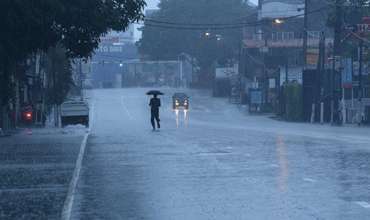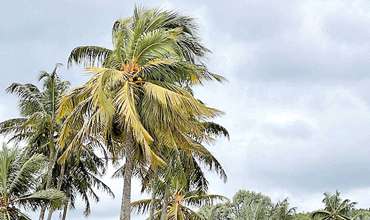Protect elephants in Sri Lanka and the world
The recent finding of the remains of seven cow elephants in a forest Reserve near Sigiriya by the Wildlife Department officials; after post mortem, have been confirmed that the elephants were poisoned.
Further autopsies are being carried out by Wildlife experts and the Government Analyst’s department officials. As reported in the media it is yet to be determined whether this poisoning was a deliberate acts or accidental.
It is believed as many as nearly 200 elephants are killed every year in Sri Lanka by poachers to collect ivory, often elephants were knocked down by Trains and heavy vehicles while they cross Railway Lines and main roads, by villages and farmers when stray onto human habitats and destroy cultivations and villages’ properties; they are poisoned by villages and farmers. At the same time there were many incidents annually of prowling elephants killing villages.
Sri Lanka Elephant population has dwindled from an estimated 12,000 at the beginning of the last century. According to the last census carried out in 2011 the elephant population in Sri Lanka was about 7000. The census has counted 5,879 elephants – 122 of them tuskers – and 1,107 calves.
The planned island-wide wild elephant survey in Sri Lanka on 13th & 14h September 2019 by the Department of Wildlife Conservation had to be postponed due to bad weather conditions prevailed in the country during that period. The survey would have given information on wild elephant population, their distribution and carves present in the island.
The dwindling elephant population struggle both inside and outside sanctuaries and forest reserves while the authorities are unable to save them. No proper policy is in place for the protection of endangered elephant population it can be expected that there will be no elephants left in Sri Lanka by the middle of the next century.
The authorities must wake up from their slumber; look for new initiatives of effective protection, enforcement and to generate broader understanding of the critical plight of elephants. Unless elephant conservation is made a top priority and work with individuals, organizations and Wildlife Protection Societies to ensure that future generation will be able to see elephants with their eyes and not just read about them in books. They would have to travel to Africa to see the elephant. Ironically, it is their fortune that in Southern Africa the elephant population is growing.
In South Africa, Namibia, Zimbabwe and Botswana the elephant populations is booming. It’s estimated there are at least 130,000 elephants in Botswana alone provoking a debate over whether to legalize elephant hunting to reduce crop damage. When their numbers are excessive, elephants can wreak havoc on an ecosystem, flattening entire forests. They propose to trade in ivory (which is banned now), without which, they argue, there are no positive incentives to conserve elephants and sales would provide much-needed income. Botswana proposes for the sale of tonnes of stockpiled ivory.
In the world-famous Kruger National Park in South Africa it is estimated there are about 17,000 elephants today, far beyond earlier planned limit of about 7,500. Their fast-rising elephant population have gone up against the limits. The growing elephant population in South Africa overcrowding private reserves that can sustain the increasing numbers are risking extensive damage to the ecosystem.
As a measure of slowing down growing elephant population, reserves in South Africa have turned to contraception. The experiment began in Kruger National Park in the late 1990s and it is now the world’s longest-running program of elephant contraception and it has proven to be remarkably effective. Using a dart rifle from a helicopter, cow elephants are injected with a vaccine that stimulates their immune system to produce antibodies that block fertilization.
Yet the debate over booming elephant population in Southern Africa has obscured; poachers are killing tens of thousands of elephants annually in Africa. The increasing demand for ivory is fuelling brutal slaughter of African elephants. The decline has been swift in Tanzania, In West, Central and eastern African countries rampant poaching and ivory trafficking are dwindling elephant population.
As a measure of addressing the critical poaching and trafficking action and trans-boundary elephant protection effort, in 1989 the “Convention on the International Trade of Endangered Species of Wild Fauna and Flora” (CITES) banned international trade in ivory in order to protect the wild African elephant.
Individual countries continued to regulate their domestic ivory trade. Poaching slowed and elephant populations began to recover. African governments kept stockpiles of ivory harvested from animals that died naturally.
The majority of African elephant range states are opposed to the international ivory trade. However, southern African states have consistently tried to get the Parties to CITES to allow international trade in ivory arguing that their populations of elephants are relatively secure.
This stance has little regard for the consequences of such trade to elephant populations in other countries including Asian elephants; Sri Lanka included.
According to the African Elephant Status Report (AESR) 2015 by International Union for Conservation of Nature (IUCN), there has been a decline of 68 per cent in African elephant population in the last 36 years. In just 9 years, between 2006 and 2015, the AESR calculated a loss of approximately 111,000 elephants.
The “Convention on International Trade in Endangered Species of Wild Fauna and Flora” (CITES) is an international agreement between governments to ensure that the trade in wild animals and plants does not threaten species’ survival. With 183 Parties, the CITES remains one of the world's most powerful tools for wildlife conservation through the regulation of trade.
Thousands of species are internationally traded and used by people in their daily lives for food, health care, housing, tourist souvenirs, cosmetics or fashion. CITES regulates international trade in over 35,000 species of plants and animals, including their products and derivatives, to ensure their survival in the wild with benefits for the livelihoods of local people and the global environment.
This year’s “CoP–18” conference of the CITES is of special significance to Sri Lanka. At the 17th triennial “Conference of Parties” of the CITES that was held in October 2016 in Johannesburg, South Africa, Sri Lanka offered to host the “CoP–18” conference in 2019 in Colombo and was accepted. It was scheduled to be held in Colombo in May this year.
It was not held in Colombo as scheduled due to security concerns after April – Easter Sunday’s incident and was held in Genève (Switzerland) from 17-28 August 2019. The Press Release issued at the conclusion of the CITES conference states “CoP18 was attended by 169 member governments (plus the EU) and some 1,700 delegates, observers and journalists. CoP19 will be held in 2022 in Costa Rica.” It would have been a fabulous opportunity that Sri Lanka lost with regard to wild life conservation; particularly at a time the Elephant population is facing extinction.
Moreover, it was a great opportunity for tourism promotion that was slipped away from Sri Lanka in the most unfortunate manner.
RAJA WICKRAMASINGHE
CANADA
-
Still No Comments Posted.
















Leave Comments